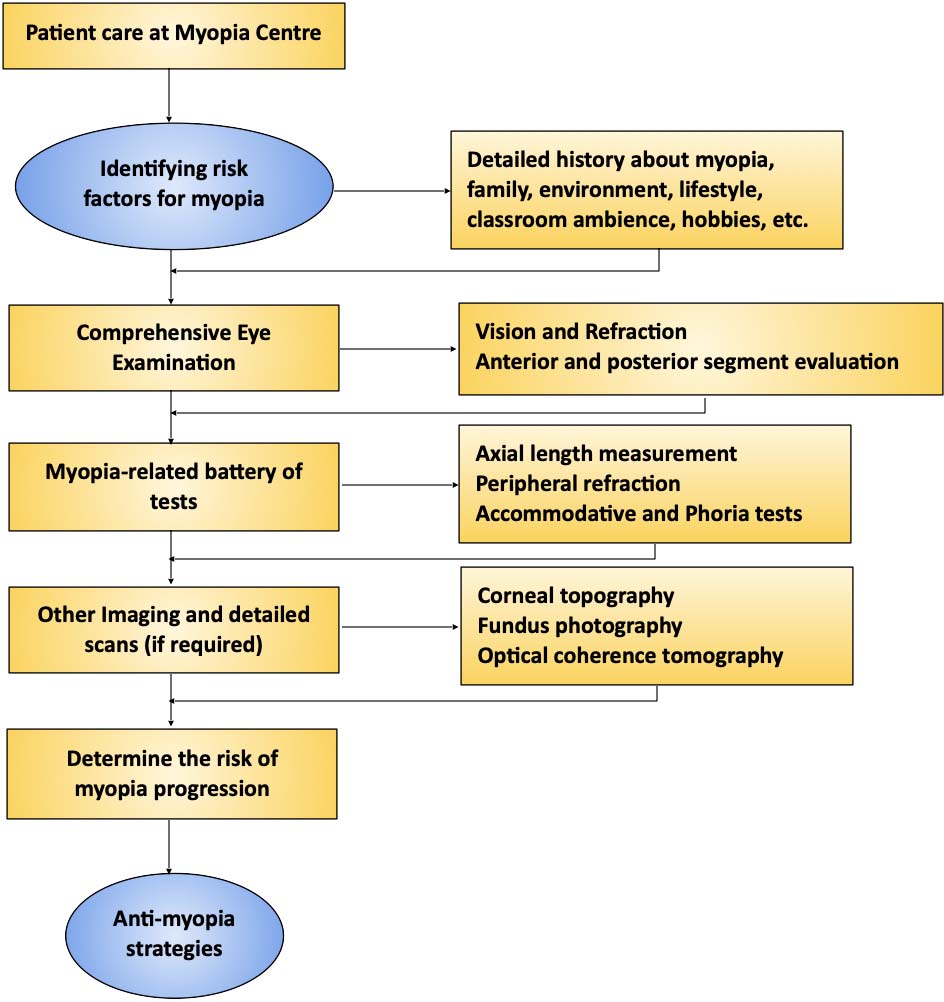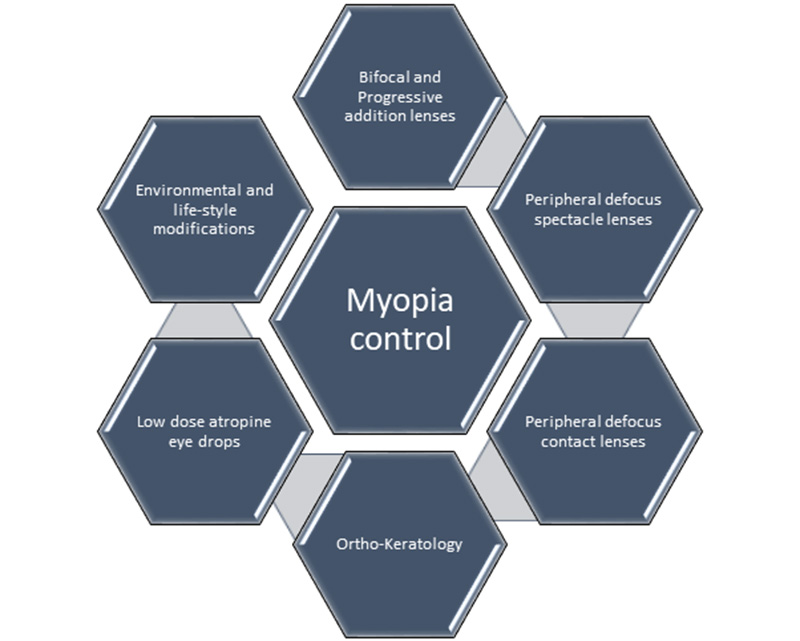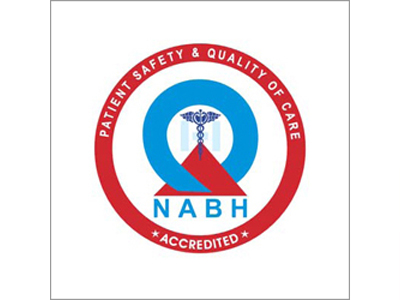The Myopia Centre
Prevention and Control
Myopia, also known as near-sightedness, is the most common ocular condition in children and young adults leading to blurred vision for distance viewing. It is a serious public health concern of the 21st century and is projected to affect approximately half of the global population (5 billion) by 2050. Additionally, there will be 1 billion at the risk of developing myopia related complications that has potential to lead to visual loss.
L V Prasad Eye Institute (LVPEI) is one of the very few institutes in the world to have a dedicated Myopia Centre (courtesy - Infor (India) Pvt. Limited) and Myopia Research Lab to treat and investigate various aspects of Myopia. The Myopia Centre, inaugurated at LVPEI, is the first-of-its-kind in India focusing on all aspects of this problem. Equipped with state-of-the-art technology, the centre provides holistic and evidence-based anti-myopia treatment to prevent the onset of myopia and reduce its progression in children and young adults.
The problem in India: Our research publications in international journals indicate:
- The prevalence of Myopia among Indian urban children is predicted to increase from 20% in 2020 to about 48% by 2050.
- 5 out of 10 children (48%) living in urban regions of India are likely to have myopia by 2050 if no anti-myopia measures are initiated.
- 2 out of 10 children (20%) in India are known to have rapid myopia progression.
- Myopia progression is rapid in children who develop myopia at a young age.
- About 4% of the Indian myopes tend to have complications that can lead to permanent vision loss.
Risk: The current digital ecosystem, more indoor-centric lifestyle, involvement in intense near work activities (for entertainment and in strive for academic excellence) and limited outdoor time may result in an epidemic of myopia in India. A similar situation was seen in China or Singapore a few decades ago (and now 80-90 children out of 100 have myopia in these countries).
Who needs myopia Management
Signs your child might need Myopia Care
Here are a few obvious signs that indicate your child may need to consult a myopia specialist and may need myopia management:
1. Sitting too close to the television or difficulty in copying from the blackboard: Doing things at a very closer distance may be an indication that your child is already having nearsightedness or myopia. More often a child with myopia will hold their books or near objects very close to their face. If your child has these signs, a visit to a myopia care specialist is recommended for a detailed eye examination.
2. First time wearer of myopic spectacles: Regardless of the child’s age, every child for the first time wearing myopic spectacles requires a detailed risk assessment of myopia. Research has shown that myopia is a multifactorial condition and could be caused due to genetic or lifestyle influence, or both.
3. Frequent change in spectacle power: Frequent change in eye prescription (minus power) of your child is a telltale sign of myopia progression and an increase in the size of the eyeball. A regular visit to a myopia specialist is recommended if your child is squeezing the eyes to see the object, complaining of headache or blurred vision.
4. Parental myopia: Children with a family history of myopia (either parents or grandparents with myopia) have a higher risk of developing myopia. The risk of developing myopia increases from approximately 15-20% in children with one myopic parent to 35-45% percent with two myopic parents. Children with a positive family history of myopia should be identified for early prevention and management. History of myopia in siblings, especially if the elder sibling is already wearing spectacles or contact lenses for myopia, having a comprehensive myopia evaluation will help in the prevention of myopia in the younger one.
5. Increased time spent on near work: There is growing evidence suggesting that increased near work activities, prolonged reading/writing without regular breaks, and increased time spent playing games on hand-held digital gadgets may cause or lead to the progression of myopia. Nowadays, the number of hours a child spends looking on a digital screen and books has drastically increased and it has become more important than ever to make sure that the child looks at the far or takes frequent breaks. Proper monitoring of a child's behavioral activities and/or lifestyle through various tracking devices, and appropriate consultation are required to reduce the risk of onset/progression of myopia.
6. Reduced time spent on outdoor activities: In the current scenario, the contemporary education system makes your child stay glued to either books or digital platforms, hence lack of outdoor activities and more of a sedentary lifestyle. Being engaged in more outdoor activities has been shown to reduce the risk of onset/progression of myopia. Effective consultation by a myopia care specialist is recommended to know the appropriate time and place for outdoor activities which may delay the onset of myopia or slow down the progression of myopia.
Workflow at the Myopia Centre

Different Myopia-control strategies available at the Myopia Centre, LVPEI

Frequently Asked Questions (FAQs)
Q. What is myopia?
Myopia is a medical term for short-sightedness or near-sightedness. A person with myopia can clearly see objects close to the eye, but he/she will have difficulty seeing objects that are far from the eye.
Q. What are the chances of your child developing myopia?
- With one or both parents being myopic, a child has a higher risk of myopia.
- Reading in dim illumination.
- Doing a near task such as sewing, reading a small font or for a long time or using digital platforms (ex: mobile phone) especially holding the phone or tablet close to the eyes for an extended duration.
- Recent research has also indicated that less time outdoors can also trigger myopia.
- If you wear a prescription spectacle of lower power than required.
Q. How can one prevent myopia?
- Get an annual eye examination for your children.
- Find out what you can do to prevent your child from developing myopia.
- Avoid prolonged near work.
- Spend at least 60-90 minutes in natural light (sunlight).
- Use good lighting for reading.
- Take a break at regular intervals while performing a near task.
Q. When will myopia occur?
- Children over 5 years are at risk of being affected by myopia.
- Myopia is commonly caused due to unstable growth of the eyes.
- In younger children, myopia progresses more quickly because their eyes are growing at a faster rate, leading to higher levels of myopia, thicker glasses and more risk of vision loss.
Q. How will I know if I am or my child is affected with myopia?
- Cannot see the blackboard/whiteboard from the last bench at school.
- Holding books, tablets and mobiles close to the face.
- Faces difficulty to see road signs while driving.
- Sitting too close to watch anything on the television.
- Squinting eyes to read or see objects that are far away from the eye.
Q. What are the available anti-myopia treatment options?
With current evidence-based treatments available that have shown efficacy in slowing down the progression of myopia, we use environmental, optical and pharmacological myopia control strategies in our myopia centre. Our myopia care team would thoroughly evaluate your child before discussing and advising you on the most appropriate treatment option.





